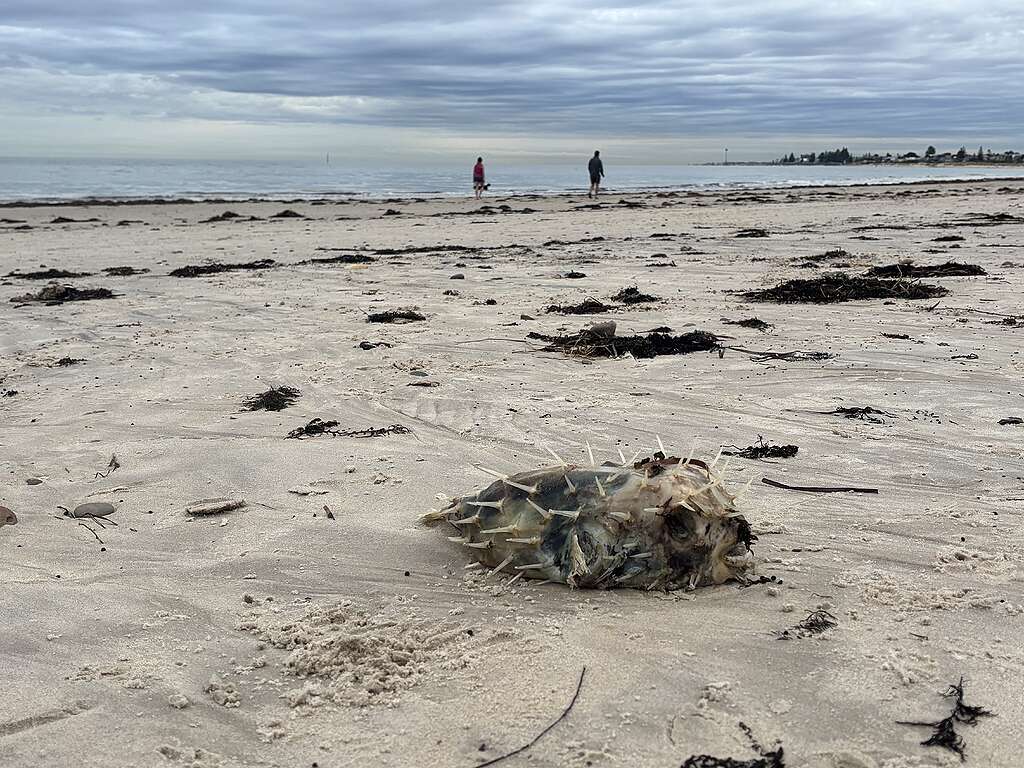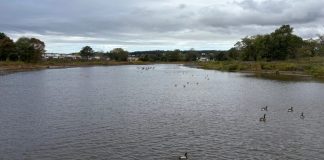Australia is currently facing an unprecedented marine disaster: a toxic algal bloom stretching across 500 kilometres of South Australia’s coastline. The number of animals killed and habitats destroyed is equivalent in scale to the black summer bushfires.
The algal bloom was not inevitable: scientists have said it was “foreseeable and even predicted.” And yet our politicians are too scared to name the cause: out of control pollution from fossil fuels are causing our oceans to warm, and it is getting worse every year.
What’s Happening in South Australia?
Thousands of marine animals, from dolphins and sharks to sea lions and the iconic giant cuttlefish, are washing ashore dead. Underwater, entire shellfish ecosystems are experiencing mass mortalities. This sprawling, toxic algal bloom has been ongoing for months and shows no signs of dissipating soon.
What is causing the algal bloom?
South Australian premier Peter Malinauskas has called the bloom a ‘natural disaster.’ But’ the Government has so far refused to acknowledge the root cause of the deadly bloom – the impact of pollution on our climate. Nowhere on the SA Government’s website explaining the bloom is climate change mentioned. And yet scientists are clear that the bloom is an unnatural disaster, caused by fossil fuels heating the planet:
- Marine Heatwaves: Warm ocean temperatures, a direct result of climate change, create ideal conditions for toxic algal growth. These marine heatwaves – driven by greenhouse gas emissions from fossil fuels – are becoming more frequent, lasting longer, and are more intense. Since September 2024, SA waters has seen a heatwave with temperatures 2.5 degrees above normal. contributing significantly to the conditions that allow these blooms to thrive.
- Intensified Storms and Floods: Climate change is intensifying flooding, which causes massive pulses of nutrients to run off into the sea. Recent flooding through the Murray-Darling Basin has carried fertiliser runoff from farms into the ocean, creating the conditions for the current bloom to thrive.
- Weakened Marine Ecosystems: Years of habitat loss and degradation through ocean acidification and pollution have left our marine ecosystems vulnerable. Coastal habitats like kelp forests, seagrass meadows, mangroves, and shellfish reefs once acted as natural filters, absorbing excess nutrients that found its way into the ocean. With these vital ecosystems degraded or gone, our oceans are less able to cope with environmental stressors like the toxic bloom which has taken hold in SA.
Fossil Fuel Companies Are Responsible
This crisis has been created by climate change, which is a direct consequence of unchecked greenhouse gas pollution. Fossil fuel companies, like Adelaide-headquartered Santos, bear significant responsibility. Just last week, Santos was found to have let pure methane gas leak into the atmosphere from 13 wells it owns off the coast of WA. For years Big Gas and their politician friends in Australia have been downplaying the impact of gas on climate change – but gas causes just as much pollution as coal.
Greenpeace is currently suing Woodside, another big gas company, to hold them to account for allegedly misleading and/or deceiving the Australian public about the enormous climate harm of its gas and oil projects.
As one expert noted in a report from the Biodiversity Council on the bloom: “We do not yet punish industries that pollute the atmosphere with greenhouse gases. There will never be enough money to address these catastrophes and to compensate the people and businesses being impacted until we adequately charge polluters. As long as people can pollute for free, this is our fate”.
Gas and coal are fossil fuels that must be phased out and replaced with clean energy, and the polluters which cause these unnatural disasters should be held responsible.

Will another algal bloom happen in the future?
The current global warming and emissions trajectory paints a grim picture for our oceans and marine life. Without rapidly phasing out of fossil fuels, the world is currently on track for a global temperature rise significantly above the 1.5 degree limit agreed upon in the Paris Agreement as safe.
Projections from the UN and scientific experts say that with current policies, we are heading towards warming of between 2.5 to 2.9 degrees by the end of the century.
This will have devastating consequences for our oceans:
- Accelerated Ocean Warming: Even a small increase in global average temperature means a substantial rise in ocean temperatures. For every degree the planet warms, the oceans absorb a disproportionate amount of that heat. A global temperature increase of 2.5-2.9 degrees could lead to an average ocean temperature increase of up to 4 degrees in surface waters.
- More Frequent and Intense Marine Heatwaves: These events, already a major factor in the current South Australian bloom, will become the norm and intensify further. This creates chronic stress for marine species and ecosystems, pushing them beyond their ability to adapt and recover. Marine organisms are ectothermic, meaning their internal body temperature is largely dictated by their surrounding environment. This makes them highly sensitive to even minor fluctuations in water temperature.
- Increased Ocean Acidification: As oceans absorb more carbon dioxide from fossil fuel emissions, they become more acidic. This directly impacts shellfish, corals, and other organisms that rely on calcium carbonate to build shells and skeletons, threatening the very foundation of marine food webs.
- Loss of Critical Habitats: Already threatened ecosystems like coral reefs, kelp forests, and seagrass meadows will continue to degrade and disappear, taking with them the countless species that depend on them, and worsening the impact of nutrient run-off. This creates a toxic cycle which enables algal blooms.
Without addressing pollution from coal and gas, catastrophic algal blooms will become increasingly common in Australia’s coastal waters, impacting not just marine biodiversity but livelihoods, industries and coastal communities.
What can we do?
The scientific community has been warning us about the consequences of unchecked pollution for years. This catastrophic bloom is a stark wake-up call. We are calling for the Government to:
- Make big polluters pay for the damage they cause to our environment.
- Phase out of fossil fuels and replace them with clean energy
Until we can talk honestly about the cause of the algal bloom, we will never put into action the solutions that can prevent it.
Great Job Joe Rafalowicz & the Team @ Article – Greenpeace Australia Pacific Source link for sharing this story.





